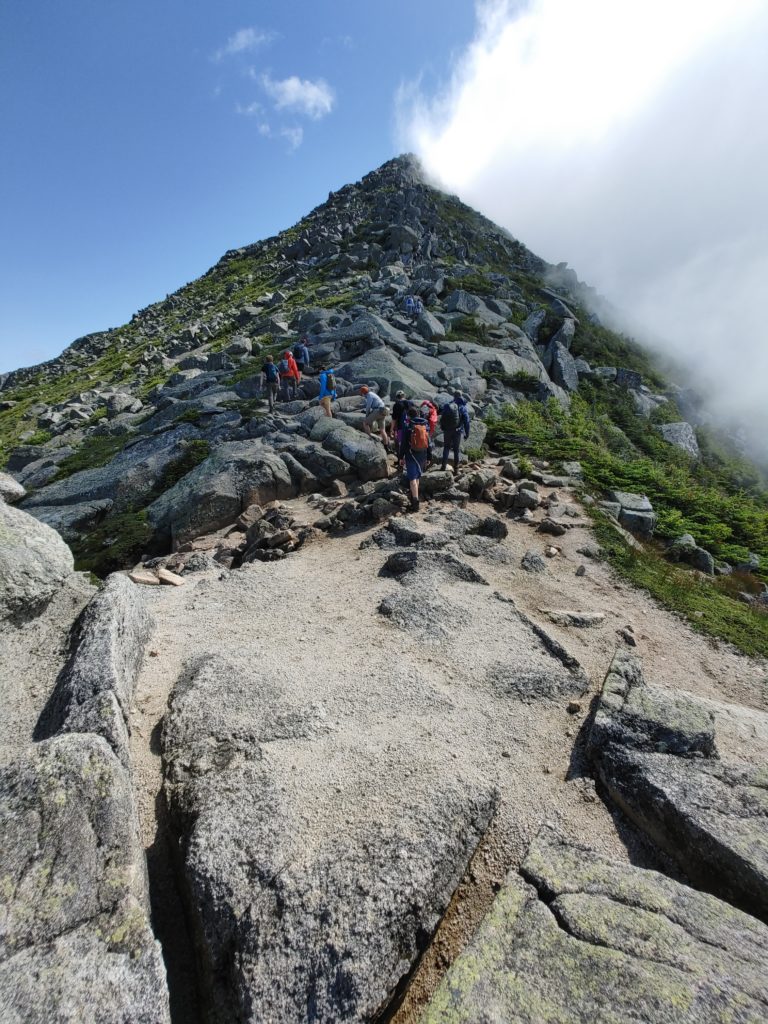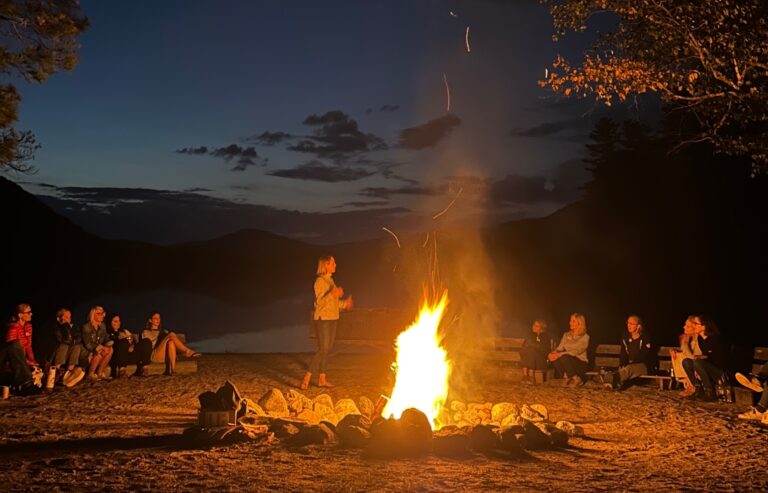- Camp Pemigewassett
- Newsletters 2021
- Pemi History
- Pemi West
- Trips
2021 16’s Expedition
This summer a group of Pemi’s 16-year-olds returned to Camp for a special version of the Pemi 16s/Pemi West trip. While this trip has historically taken the boys out west and into new territory compared to their previous Pemi summers, the Covid-induced cancellation of the 2020 summer led to the creation of a unique opportunity that allowed this group to enjoy some of the highlights of a typical 15-year-old Pemi summer, along with additional outdoor adventures. The trip was led by longtime Pemi veteran Nick Davini. In the post below, Nick shares his reflections on the experience. Enjoy!
The Pemi 16s had a long overdue homecoming this year after losing what would have been their final summer as campers in 2020. They reunited to live together and serve the Pemi community for two weeks, then headed to Maine for three weeks of backcountry adventure.
The Pemi time involved both meaningful work and the opportunity to enjoy all Camp has to offer. The boys built a new Junior campfire circle, started a trail connecting the Pemi Hill Shelter to the Woodshop, and served meals outside when health protocols had us eating in three different places. Our home was a yurt village on Junior Point, which was a prime location to take Polar Bear dips throughout the day. The boys relaxed together when they weren’t doing service work, playing stickball, or tossing frisbees. Outside of Camp, we hiked Mt. Cube, swam in nearby lakes and rivers, and even played mini golf. The group met each night to discuss a prompt, asking everyone to reflect on their lives at Pemi and the outside world. As a result, they grew closer together even after having been friends for as many as eight years. The relief and joy of having a last hurrah at Camp was apparent in the boys’ faces, and they certainly made the best of their time.

After sharing some wholesome memories, we loaded up and drove northward. Dave Robb, a past director of Pemi West, joined us to co-lead a backpacking trip through the 100-Mile Wilderness and up Mount Katahdin, the tallest peak in Maine. As an experienced outdoor educator and guide, Dave was able to share lessons in backpacking skills and leadership, as well as in giving and receiving effective feedback. The boys used what they learned to take turns leading the group, working in pairs to plan and manage a day of travel several times each.
The first few days of hiking were particularly tough. The boys hoisted packs loaded with gear and ten days’ worth of rations over gnarled roots, aggressive rocks, and formidable slopes. A number of rolled ankles and bee stings stacked up, but the group remained optimistic. We passed through classic Maine landscapes, including beaver dam ponds, dense evergreen forests, exposed bedrock, mossy ravines, and peaceful lakeshores. Once we got through the tallest peaks – all of which were confined to the first 50 miles – the pace quickened. Daily mileage went from ten miles or fewer each day to more than fifteen toward the end. We emerged from the wilderness in a climactic downpour of rain, feeling empowered and grateful for our time in the woods.

The next morning, we took on the imposing Katahdin. Swapping the bulk of our gear for small day packs, we flew up the mountain on legs accustomed to heavy loads. The hike up the Hunt Trail soon became a climbing project as we scaled a massive boulder field that eventually reached a plateau before the peak. We reached the top in reverent silence and celebrated our arrival with a summit photo. The view from there is one of geological wonder, unique in the East. A group of Pemi 15s on their own Maine adventure joined us not long after, and we visited for a while before descending the Abol Trail, which was as precarious as the ascent. The next day, we said goodbye to Dave and welcomed Reilly McCue for a week of exploring the Allagash Waterway.

Reilly comes from a background as a longtime Pemi trip counselor, professional hunting and fishing guide, and lifelong naturalist. He has led the Allagash trip around thirteen times and knows the route inside and out. I have also led the trip twice before, and neither of us could believe how much we discovered this go-round by taking our time. We planned to cover far less than the usual distance in almost twice the time we do normally, and it made all the difference. We put in at Chamberlain Bridge and took a few days to explore all the lakes between there and Churchill Dam. During our time on the water, we studied plants and animals, hiked a lookout trail, visited two abandoned steam engines, foraged wild raspberries for jam, made pottery from natural clay, caught and ate fish, and spent lots of time reading and reflecting while at campsites. If we had followed tradition, we would have paddled through most conditions except thunderstorms. This strategy once made for long days of struggling against the wind. This time, however, when the winds picked up and made for rough travel, we set up tents at the nearest campsite or simply waited until the water calmed to travel in the evening. Once all was quiet, we were able to go up tributaries and see incredible biodiversity, including eagles, herons, mergansers, and several moose. On the last day we ran the Chase Rapids, ending our trip on a particularly wild and joyful note.

As an instructor, I can’t help but beam with pride for the boys who shared this adventure. They were hit especially hard when camp operations were limited last summer, and they took a risk when we offered a new program to bring them back together. During the course of five weeks, every boy grew as a leader and an individual, and they rallied whenever unexpected events took place. I think I can speak for the group when I say that the trip was a success and will leave us all with great lifelong memories.
Many thanks to everyone who helped plan, prepare, and support this wonderful experience.
Cheers,
– Nick Davini






















































